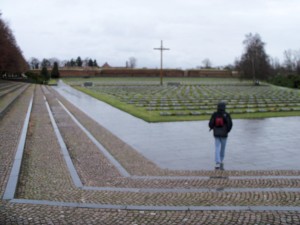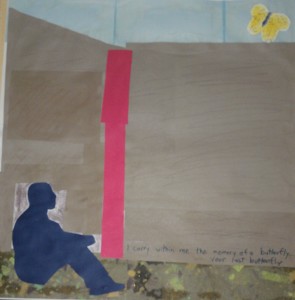The Ghetto Museum is located in the main section of the town, known as the Big Fortress. After leaving the museum I took a walk around the town’s main square and down the side streets, lined with old buildings and barracks, most of them a tan color with reddish roofs. It was raining by this point, and few people were around. The people that I did see were mainly inhabitants of the town. Strange as it seemed to me, people do live in Terezin today. I wondered how they managed to go about their daily lives when the memories of those who were imprisoned here were so strong. Do they ever think about what happened here? Or do they go about their daily lives without reflecting on the history at all, with everyday struggles taking priority?
The other portion of town is called the Small Fortress, which was historically a jail for political prisoners. In 1940, the jail was taken over by the SS and was operated by Nazis for the remainder of the war. To get to the gates of the Small Fortress, you have to exit the main part of the complex, cross a bridge over the rushing river Ohre, and walk through vast Jewish and Christian cemeteries with unmarked gravestones. During World War II, the cemetery quickly filled up, and most of the 32, 500 prisoners who died in Terezin were not given a proper burial, but were sent to the crematorium at the far edge of the Big Fortress. On certain days, the crematorium can be viewed by the public, though it was closed when I visited.
As I walked to the Small Fortress, cold rain began to fall and the streets were deserted. The utter desolation of the place chilled me, and its impact on me is perhaps best represented by a photograph that I took during the walk to the Small Fortress. A lone figure walks through the rain, crosses the wet stone pathway that cuts through the cemetery, with rows of graves stretching out endlessly. A plain cross can be seen far ahead, as can black trees whose bare branches seem to claw at the gray sky. And in the distance is a grayish stone wall, the barrier which once enclosed people inside the Small Fortress of Terezin.

